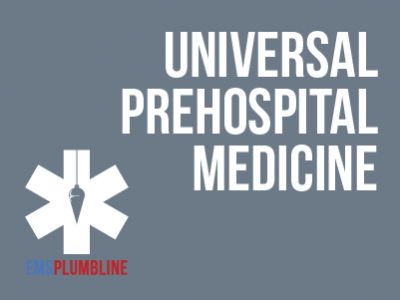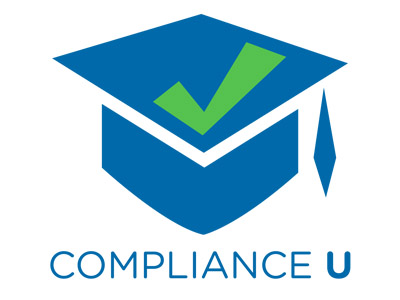 |
Head Trauma Interviews: Lesson 1 |
1.50 |
Lauren Wittman RN, BSN, CCRN-CMC, sits down to discuss some of the fundamental components of brain and skull Anatomy and Physiology with Jonathan J. Stone, M.D. . As the discussion continues, Dr. Stone offers an in-depth look at what we can expect when secondary trauma to the brain continues to manifest. This valuable information will assist you with understanding your local protocols no matter where you are. Final Exam: This multiple-choice exam is designed to test your knowledge of the material you just reviewed. You have two attempts to gain an 75% or higher on this exam. Please take your time and answer each question carefully. |
 |
Head Trauma Interviews: Lesson 2 |
2.00 |
In this second segment of our series, Christopher G. Zammit, M.D. sits down with Lauren Wittman, RN, BSN, CCRN-CMC and they define what head trauma is and how best to treat it. Final Exam: This multiple-choice exam is designed to test your knowledge of the material you just reviewed. You have two attempts to gain an 75% or higher on this exam. Please take your time and answer each question carefully.
|
 |
Health and Safety in the Laboratory |
0.75 |
This course is designed for employees who work in a laboratory setting. It covers the health and safety measures that should be taken in the lab and how to best protect yourself from hazardous exposures. |
 |
Health and Stress Management for Paraprofessionals |
1.00 |
Every day, paraprofessionals dedicate themselves to caring for and nurturing students and families. Often, paraprofessionals are so dedicated to serving others, they neglect their own needs. When this happens, paraprofessionals can experience stress that causes them to become overwhelmed, exhausted, frustrated, dissatisfied with job responsibilities, and unappreciated. When they maintain a healthy, balanced lifestyle, paraprofessionals are in a much better position to face the challenges of supporting and nurturing children and families with positive energy, enthusiasm, patience, and empathy.
By developing self-awareness, linking their personal and professional goals, developing a healthy balanced lifestyle, and identifying and managing stressors effectively, they can create and maintain a positive sense of well-being that allows them to maximize their ability to build positive relationships with students, parents, colleagues, and others. |
 |
Health and Stress Management for Teachers |
1.00 |
Every day, teachers dedicate themselves to caring for and nurturing students and families. Often, teachers are so dedicated to serving others, they neglect their own needs. When this happens, teachers can experience stress that causes them to become overwhelmed, exhausted, frustrated, dissatisfied with job responsibilities, and unappreciated. When they maintain a healthy, balanced lifestyle, teachers are in a much better position to face the challenges of supporting and nurturing children and families with positive energy, enthusiasm, patience, and empathy.
By developing self-awareness, linking their personal and professional goals, developing a healthy balanced lifestyle, and identifying and managing stressors effectively, they can create and maintain a positive sense of well-being that allows them to maximize their ability to build positive relationships with students, parents, colleagues, and others. |
 |
Healthy Bodies: Promoting Good Nutrition and Physical Activity in Child Care |
1.00 |
This course will give you a broad overview of how to instill healthy habits at an early age. It will provide you with information about the nutritional needs of children and the benefits and risks associated with physical activity levels. Strategies will be given to use this knowledge in the classroom. |
 |
Heat Illness |
0.75 |
This course covers the basics when it comes to heat-related illnesses. The topics discussed will include warning signs, types of heat-related illnesses, and how to prevent these illnesses. |
 |
Helping Children with ADD Succeed in School-Age Programs |
2.00 |
Children with ADD regularly experience struggles and challenges at home, in school, and in the community. Without the help of knowledgeable, understanding, and supportive people, they often experience multiple failures and frustrations on a daily basis. Typically, they lack the self-confidence that stems from learning how to do things well. Their lack of social skills and self-control makes it hard for them to make friends with schoolmates and children they meet in program activities. By the school-age years, many of these children do not feel good about themselves. They feel lonely and ostracized. Their self-esteem sinks a little lower every day.
Staff in school-age programs are in a position to make a positive difference in the lives of children with ADD. Armed with important information and management tools, they can help reverse the cycle of failure and frustration that results in low self-esteem in these children. They can make life easier, happier, and more satisfying for children with ADD, their parents, other children in the program, and themselves.
IMPORTANT NOTE: ADD stands for Attention Deficit disorder. Many professionals refer to this disorder as ADHD, which stands for Attention Deficit Hyperactivity Disorder. Some professionals use these terms simultaneously or interchangeably. In this module, the term ADD is used to refer to the basic form of the disorder and recognizes that the basic pattern of inattention associated with ADD often includes the component of hyperactivity related to extremes in temperament. |
 |
Helping Children with ADD Succeed In School-Age Programs (Collection) |
2.00 |
Children with ADD regularly experience struggles and challenges at home, in school, and in the community. Without the help of knowledgeable, understanding, and supportive people, they often experience multiple failures and frustrations on a daily basis. Typically, they lack the self-confidence that stems from learning how to do things well. Their lack of social skills and self-control makes it hard for them to make friends with schoolmates and children they meet in program activities. By the school-age years, many of these children do not feel good about themselves. They feel lonely and ostracized. Their self-esteem sinks a little lower every day.
Staff in school-age programs are in a position to make a positive difference in the lives of children with ADD. Armed with important information and management tools, they can help reverse the cycle of failure and frustration that results in low self-esteem in these children. They can make life easier, happier, and more satisfying for children with ADD, their parents, other children in the program, and themselves.
IMPORTANT NOTE: ADD stands for Attention Deficit disorder. Many professionals refer to this disorder as ADHD, which stands for Attention Deficit Hyperactivity Disorder. Some professionals use these terms simultaneously or interchangeably. In this module, the term ADD is used to refer to the basic form of the disorder and recognizes that the basic pattern of inattention associated with ADD often includes the component of hyperactivity related to extremes in temperament. |
 |
Helping Children with ADD Succeed In School-Age Programs: Characteristics and Needs of Children |
1.00 |
Children with ADD regularly experience struggles and challenges at home, in school, and in the community. Without the help of knowledgeable, understanding, and supportive people, they often experience multiple failures and frustrations on a daily basis. In this course, we will explore characteristics and needs of children with ADD. |
 |
Helping Children with ADD Succeed In School-Age Programs: Strategies and Techniques for Staff |
1.00 |
Children with ADD regularly experience struggles and challenges at home, in school, and in the community. Without the help of knowledgeable, understanding, and supportive people, they often experience multiple failures and frustrations on a daily basis. In this course, we will examine strategies and techniques that staff can use when working with children with ADD. |
 |
Helping Students with ADD Succeed for Paraprofessionals |
1.50 |
Children with Attention Deficit Disorder (ADD) regularly experience struggles and challenges at home, in school, and in the community. Paraprofessionals are in a unique position to make a positive difference in the lives of students with ADD. Armed with important information and management tools, they can help reverse the cycle of failure and frustration that results in low self-esteem in these students. They can make life easier, happier, and more satisfying for students with ADD, their parents, other children in the class, and themselves. |
 |
HEPA Standards 2.0 and the Self-Assessment Tool |
1.00 |
In 2011 the National AfterSchool Association adopted standards for healthy eating and physical activity (HEPA) in out-of-school time. In 2018, the HEPA Standards were updated to Version 2.0.
This interactive e-learning course, commissioned by the Kentucky Out-of-School Alliance (KYOSA) and designed by CypherWorx, will explain how the HEPA Standards were created and how they should be used, as well as presenting the Standards in their entirety. We will also cover the HEPA Standards 2.0 Self-Assessment Tool and how to use it. |
 |
High-Leverage Practices for Paraprofessionals |
1.00 |
Welcome to High-Leverage Practices for Paraprofessionals. This course covers the four fundamental components of high-leverage practices and how to implement them in the classroom to support student success. |
 |
High-Leverage Practices for Teachers |
1.25 |
Welcome to High-Leverage Practices for Teachers. This course covers the fundamental components of high-leverage practices and how to implement them in the classroom to support student success. |
 |
Homework Assistance |
2.00 |
Supporting children and youth with their homework is a basic element of nearly all out-of-school time programs, yet it is something that can be challenging for many OST professionals. During this course, participants examine the importance of homework assistance, as well as strategies and skills to provide effective homework assistance. |
 |
Honest Jobs |
0.25 |
This course is designed to assist learners in creating and using an Honest Jobs account to help secure post-incarceration employment. |
 |
Hose Competency (Instructor Guide) |
1.00 |
This is the Instructor Guide for Hose Competency. This competency evaluates the ability of assigned companies to perform hose tasks including stretching, advancing, and operating fire hose streams. This competency may also be conducted as an independent drill or evolution. |
 |
How to Build Relationships That Work |
1.00 |
Most of us already know that relationships matter in any field, but particularly in education. The question is: how? How do I build life impacting relationships with students? How do I build resourceful relationships with my colleagues on campus? How do I build supportive relationships with my students' parents? Based on the book Relationships That Work, this workshop presents a framework—the practice of four essential skills that will posture and position any educator to a place of relational readiness. 1) Reflecting (on why I am here); 2) Directing (the fuel of my emotion); 3) Connecting (building relational bridges across differences) and 4) Protecting (my mind, my heart, and my body from toxic, hurtful people). |
 |
How to Escape Survival Mode |
1.00 |
Each day presents new challenges for educators in the pandemic: student attendance, staff shortages, concerned parents, and the demands of our personal lives can leave us feeling like we’re just living to get through the day (or the hour!). It’s called “survival mode.” While knowing how to live in survival mode is necessary through these times, we do not want it to become our new normal. The good news is that we can make small physical and mental adjustments each day that will keep us from being driven by the chaos of external forces. |
 |
How to Find an Extra 30 Minutes a Day for Training and Enrichment! |
1.00 |
"I wish I had more time to do what I like doing!" This common expression relates to many concepts all vying for the same time and attention simultaneously. Rarely is there time or resources available to dedicate to enrichment and training. Nowhere is this more evident than in the Animal Keeper’s daily role. This course will provide an opportunity for the keeper/trainer to evaluate the daily processes to identify and eliminate Non Value Added process steps and allow more time for enrichment and training. Useful concepts, such as Root Cause and Current State/Future State will be used to identify the waste. There will be tools provided, which can be applied in any situation, to simplify work duties and increase daily efficiency. |
 |
How to Manage Emotions |
1.00 |
When students manage emotion, behavior manages itself. Since emotions are a powerful driver of behavior, behavior management strategies that do not empower students with emotional literacy will do little to help students gain insight into their behaviors. When we ignore, inhibit, or invalidate emotion, we deny students (and ourselves) the opportunity to learn to appropriately express emotion. Only when we invite emotion can we then instruct emotion. |
 |
How to Navigate Stress Like a Hero |
1.00 |
If only stress weren’t so stressful. There is good news, though: stress doesn’t have to be the enemy! In fact, we can enhance our emotional intelligence by identifying the sources of our stress and creating a plan for adaptive stress management. Stress fuel—adrenaline and cortisol—can empower us to be Life-Givers or Life-Suckers, and fortunately, we get to make the choice. |
 |
How to Nurture Wholistic Wellbeing |
1.00 |
Educators are nurtures, which means they make tremendous sacrifices to empower their students to grow and develop. That is a significant part of why education is commonly considered the noblest profession. Self-sacrifice, though, can become a liability when not considered in proper context; just as a cell phone battery must be recharged regularly so as not to lose all capacity, so too must the life of the educator be recharged so as not to lose the passion for this noble calling. The good news is that not only is personal balance attainable, but as we nurture it, we will find yourself maximizing our impact—both instructionally and relationally—in the classroom and beyond. Based on material from the book The Power of a Teacher, this workshop guides participants through the five areas of wellbeing: physical, occupational, emotional, financial, and spiritual. Not only does the workshop empower educators with a mandate for self-care, it offers practical, actionable strategies to achieve and maintain wellbeing. One of the most loving things we can do for those depending on us is to offer them the best version of ourselves Let’s get our recharge on! |
 |
HR Strategic Planning |
1.00 |
For your Human Resources Department to truly make a strategic impact within your organization, it's vital to be able to share the strategic goals of your Human Resources department. Otherwise, how will your organization leaders understand what value your department adds - and also the important role that the Human Resources Department plays in the overall organizational strategic plan? This session will cover how the World Famous San Diego Zoo's Human Resources Team developed a World Class HR Strategic Plan - taking their Human Resources practices to another stratosphere, and creating award-winning Best Practices that are now being shared with companies nationwide. |


























